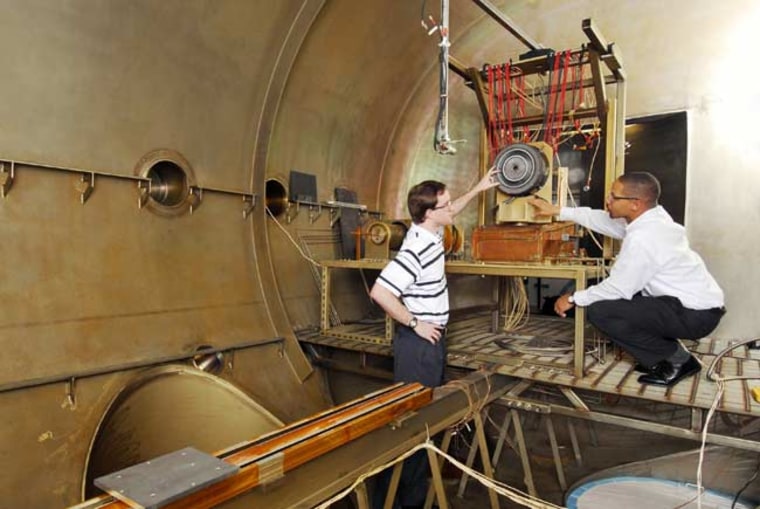Spacecraft have used ion drives to explore the moon and deep space, but a new study aims to boost the electric propulsion idea to keep satellites around Earth alive longer.
Researchers are working to develop new ion thrusters that can harvest vital electrons from electrified carbon nanotubes, rather than from precious xenon gas propellant. Less wasted propellant means that satellites can launch on smaller rockets, carry bigger payloads or stay in orbit for longer.
"It can add an extra year of life to a satellite," said Jud Ready, a materials engineer at the Georgia Institute of Technology. "That's not inconsiderable for a satellite that lasts 10 years or less."
More efficient ion thrusters could also benefit space missions beyond Earth orbit. Europe's SMART-1 lunar orbiter used them to maneuver up until it slammed into the moon in 2006, while other spacecraft use them today, including NASA's Dawn probe heading out to two asteroids and Japan's ailing Hayabusa, which is limping home from its own asteroid rendezvous.
The research stems from a $6.5 million grant by the United States Defense Advanced Research Projects Agency (DARPA) and is aimed at building a better ion thruster for spacecraft. DARPA's interest lies in the growing swarm of U.S. and Russian satellites that rely upon ion thrusters to maneuver in space, since they typically sacrifice 10 percent of their propellant supply to create the electrons that ionize the rest of their propellant.
Hall effect thrusters
The researchers are focusing their effort on so-called Hall effect thrusters, which are used today in at least a dozen U.S. satellites and many Russian satellites. These ion thrusters typically have a single, hollow cathode that holds part of the propellant used for creating electrons.
The new DARPA-funded approach replaces the hollow cathode with a whole cathode array made of carbon nanotubes, basically super-tiny tubes made of carbon. A low electric field that draws power from solar cells and on onboard battery would help strip the electrons from the nanotubes.
Nanotube cathode arrays could not only boost efficiency, but also create layers of redundancy that improve hardware reliability — a crucial factor in space where repairs range from extremely difficult to impossible. The research team used multi-walled carbon nanotubes rather than single-walled nanotubes in that spirit.
"A multi-walled carbon nanotube is a lot like an onion or a Russian nesting doll," Ready told SPACE.com. He added that their nanotubes have about 10 walls, so that holes in one or two would not render the cathode array useless. Having nanotube arrays also adds another layer of redundancy, so that the loss of a few nanotubes does not mean total failure.
Different material coatings on the nanotubes can even act as electron multipliers that boost electron harvesting efficiency. One electron that strikes the coating could generate two electrons in an effect similar to a chain reaction.
Prep for launch
The smaller size of the new cathode arrays also means that engineers can place them in a circle within the ion thruster. That would allow a satellite to control its directional thrust by simply running the cathodes on one side.
Such simplicity translates into greater reliability compared to current ion thrusters, said Mitchell Walker, an aerospace engineer at the Georgia Institute of Technology and lead investigator for the project.
"The current design relies on servomotors and joints, but each one is a possible failure point," Walker explained. "There are no moving parts with the non-mechanical way, and you get the same impact."
The nanotubes have already undergone simulated launch testing at the U.S. Army's Redstone Arsenal in Alabama. The vibration table tests shook a few nanotubes loose, but that reinforced the idea that having redundant systems would allow the ion thruster to keep on running.
Walker and Ready next plan to gauge the performance of the new cathode arrays in a Hall effect thruster over the next year and a half. A third researcher, Lisa Pfefferle of Yale University, has lent her chemical engineering expertise to help harden the carbon nanotubes against the harsh space environment.
If all goes well, a satellite carrying the new ion thruster could launch for space testing in 2015.
